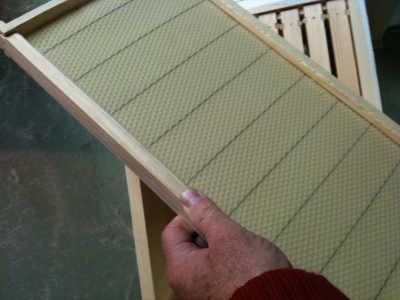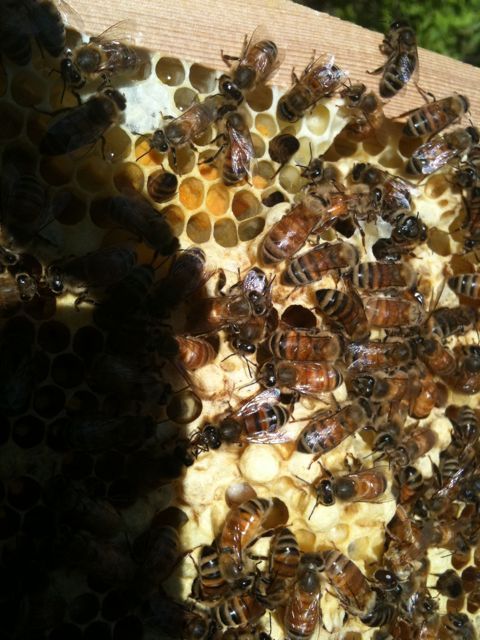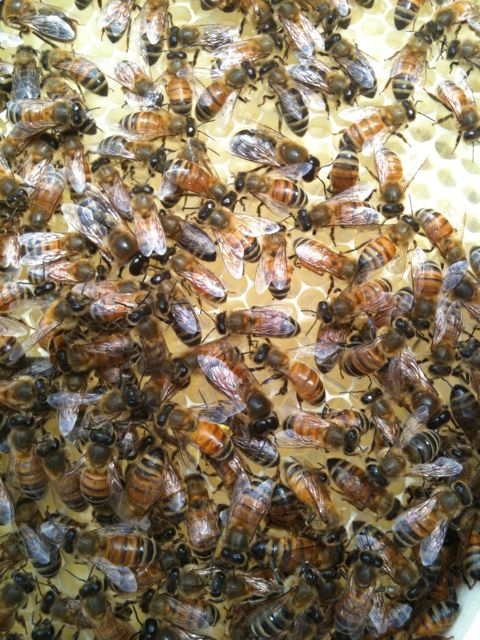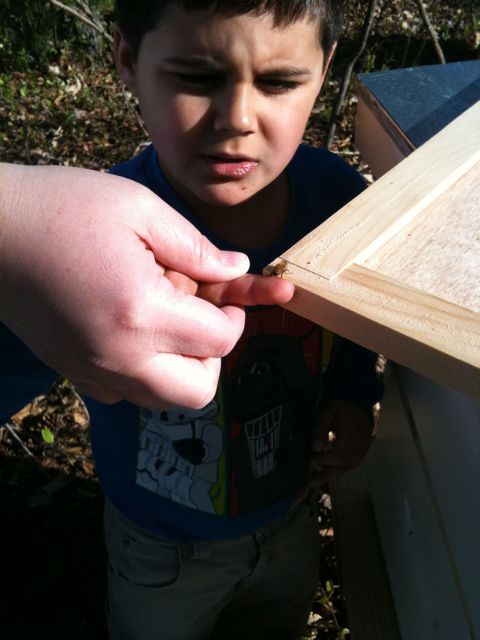I used the inverted bucket type feeders last year and, so far as I remember, they worked fine. I reasoned that they would be ok this year. I made sure they were clean, mold free, etc. and filled them with syrup. When I inverted them on the deck they seemed fine so I carried them out to the hives. Placed them, as planned, on the inner cover where they were slightly elevated by a couple of strips of wood. I peered under them from the side to ensure the ‘drip’ was non-existent. I didn’t want to flood the hives. (You know what is coming, don’t you!) In a couple of days later I went back and they seemed ok. (Hang on, you could still be right.) After a few more days I went back and discovered a mess on the ‘bee=bench’ where the bucket on one hive seemed to have drained itself dry. (See, you were right after all). I was disgusted. What did I do to my poor bees, I wondered? I took the buckets (both were empty) in the house and, woe is me, I tried again. I hate to admit it but I really did try it again. I can’t understand why they worked fine last year and not now! Was it because the air is cooler this year? I think not? I can’t imagine the difference but I won’t EVER use them again.
Meanwhile I ordered and received, today, three BeeMax top hive feeders. They make sense and they aren’t terribly expensive. Probably a LOT cheaper and less painful than coming to terms with the probability that I have wrecked two colonies! Here’s a video of a feeder that another keeper posted on YouTube. You can probably tell this keeper is in a MUCH warmer location than I am. Enjoy.






